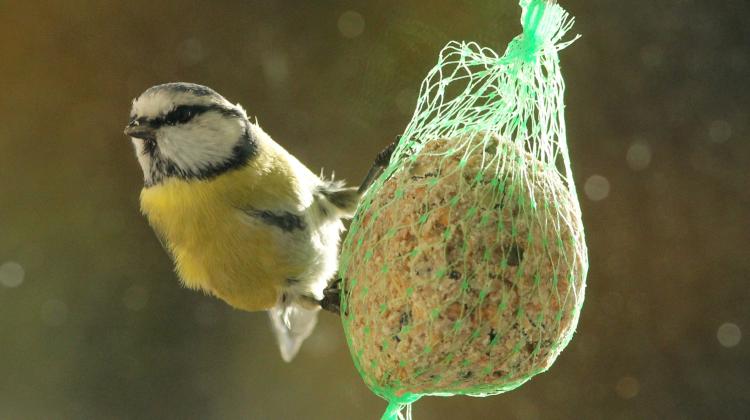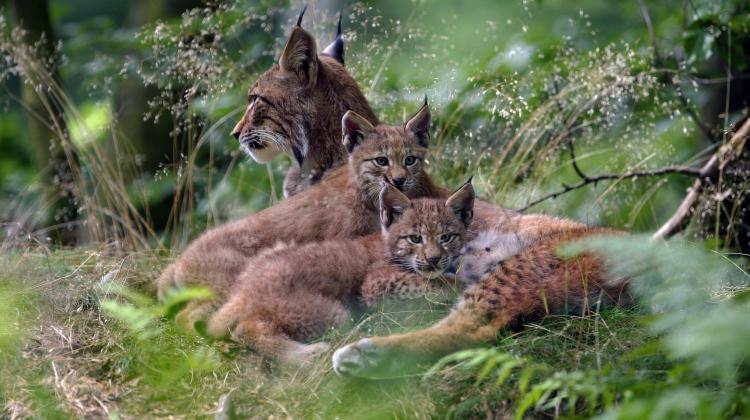Old Polish farms are oases of avian biodiversity
Traditional farms in Poland to attract a much larger number of birds - and a greater number of species - than modern farms. However, due to changes in the Polish countryside, the richness of species living there will probably decrease.
Scientists reported on the conclusions from research conducted in Wielkopolska and Małopolska in the latest issue of the "Journal of Applied Ecology".
The last decades brought a real revolution for the Polish countryside. The mosaic of tiny field - a remnant of the land reform of 1944 - is being replaced by large-scale cultivation. Scientists have long warned that from the biodiversity point of view, such conversion does not mean anything good. Hectares of corn or rape are like a desert: they give a large yield, but lead to the domination of one species and do not provide food or shelter to a rich community of lizards, birds and rodents.
The trend observed across the landscape is reinforced by the transformation of the structure of Polish villages and even individual farms. The impact of these changes on bird populations has been described by biologists from Poland and Swedish: Zuzanna Rosin from Adam Mickiewicz University in Poznań, Piotr Skórka from the Institute of Nature Conservation PAS in Kraków, Tomas Pärt and Michał Żmihorski from the Swedish Agricultural University in Uppsala, Anna Ekner-Grzyb (Adam Mickiewicz University in Poznań) and Zbigniew Kwieciński and Piotr Tryjanowski from the Institute of Zoology of the University of Life Sciences in Poznań. Their work - considered the most interesting in the new edition of the "Journal of Applied Ecology" - was highlighted on the main website as Editor\'s Choice, with additional commentary and photo on the cover of this issue.
The researchers looked at the differences between the old and the new types of farms.
The former feature varied buildings. "In the image of the traditional Polish village and farms, diversity is striking: there are many different types of buildings, there are alleys of old deciduous trees, orchards, ponds, paddocks. All this provides multiplicity of nesting and foraging sites for birds - explained Dr. Rosin. - Old buildings have complex structures and a lot of space, from the cracks under old tiles or thatch to chimneys and wooden beams, which various bird species use for nesting. Surrounding of houses is also very diverse, with old deciduous trees, shrubs, gardens and orchards, which further increase the possibilities for nesting and foraging".
The second type is a new farm or typically residential estates, arranged in accordance with the philosophy: it should be sterile. And as little weeding as possible.
Environmentalists working in two regions - Wielkopolska and Małopolska - counted birds in three different scales: at the level of individual farm, the entire village and at the landscape scale. They visited 78 farms and residential estates in 30 different villages, and observed a total of 12 thousand birds of 135 species, including many species that are increasingly difficult to find in Europe.
"We have demonstrated that old farms are places of high biodiversity - they are inhabited by a larger number of species of birds and a greater number of individual birds than the farms built after 1989" - Dr. Zuzanna Rosin said in an interview with PAP.
It also turned out that regardless of the age of the buildings, farms are home to a greater number of species and individual birds than purely residential properties.
Within all households, the study authors observed 33 species of birds. Half of them - such as house sparrows, tree sparrows, house martins, redstarts, greenfinches, caps - often clung to the old farms. They were more numerous there too.
In both types of households - new and old - researchers found swallows, white wagtails, black redstarts and starlings. Typical for new farms were proved jackdaws and collared doves, and for new residential properties - a member of the thrush family, fieldfare.
Traditional villages are the refuge of bird biodiversity in the agricultural landscape - the authors note. They believe that an increasing number of new residential properties have a dramatic impact on bird\'s life. In the villages, where new houses represent no more than one tenth of the buildings, environmentalists were finding 20-25 species of birds. In the areas where 40-50 percent houses were new, species can be counted on the fingers. Furthermore, the researchers showed that the villages have the highest numbers of birds among the habitats such as forests, fields and meadows, ecotones (transition zones, for example at the junction of forest and field) or cities. In terms of the number of species they are second only to ecotones!
Poland is an ideal place for research on the environmental aspects of a more traditional pattern of life and management of rural areas - noted the ornithologists. In contrast to Western Europe, half of the Poles still live in rural areas, in villages, still full of a variety of buildings, microhabitats, where farms are teeming with life. Agricultural lands occupy more than half (60 percent) of the Polish territory. In our country there are 1.5 million farms, 77 percent of which have an area below 10 hectares.
Scientists point out, however, that when it comes to villages and farms, in Poland we currently observe the processes that occurred several decades ago in Western Europe. "People abandon old farms, move to the cities. At the same time there is movement in the opposite direction: influx of people from the city, who build modern houses, manage their space differently" - noted Rosin.
Therefore, the wealth of bird species in the Polish countryside will decrease. "The changes that we see today are a threat to the natural value of the traditional villages and farms, and lead to loss of biodiversity in the agricultural landscape. Western Europe already suffers greatly because of this, while in Poland the level of biodiversity is still not bad. Unfortunately, however, there are clear downward trends here as well. If we fail to take action, natural value of the Polish countryside and landscape will cease to be so unique in comparison with our western neighbours "- she added.
Socio-economic changes are inevitable, but their effects can be counteracted. The study authors recommend a few simple solutions such as creating educational programs that will educate people about the importance of old farms for the survival of birds. They want to promote such simple activities as hanging nest boxes on buildings, planting trees of native species, nurturing old orchards, gardens. "All this is conducive to biodiversity. Anyone who lives outside the city, can help" - emphasised Zuzanna Rosin.
Also helpful could be including villages and farms in the national and European nature conservation programs and supporting bird-friendly architecture and farm structures. "There could be incentives for farmers or residents, who - during repairs or renovations - retain the elements key for biodiversity, such as old trees, bushes, which today are often thoughtlessly removed, and access to the interior of livestock buildings for birds. We could create programs that would compensate for changes in the structure of villages and farms, for example through planting trees and shrubs on the bounds. It does not cost much, and greatly increases biodiversity" - said Dr. Rosin.
The researchers also suggest that we can help the birds by promoting small farms, and increasing market interest in high quality local foods. "Small farms are generally more diverse and more bird-friendly, and the protection of birds may be in line with their philosophy" - said the researcher from Adam Mickiewicz University in Poznań.
PAP - Science and Scholarship in Poland, Anna Ślązak
zan/ mrt/
tr. RL
Przed dodaniem komentarza prosimy o zapoznanie z Regulaminem forum serwisu Nauka w Polsce.


















